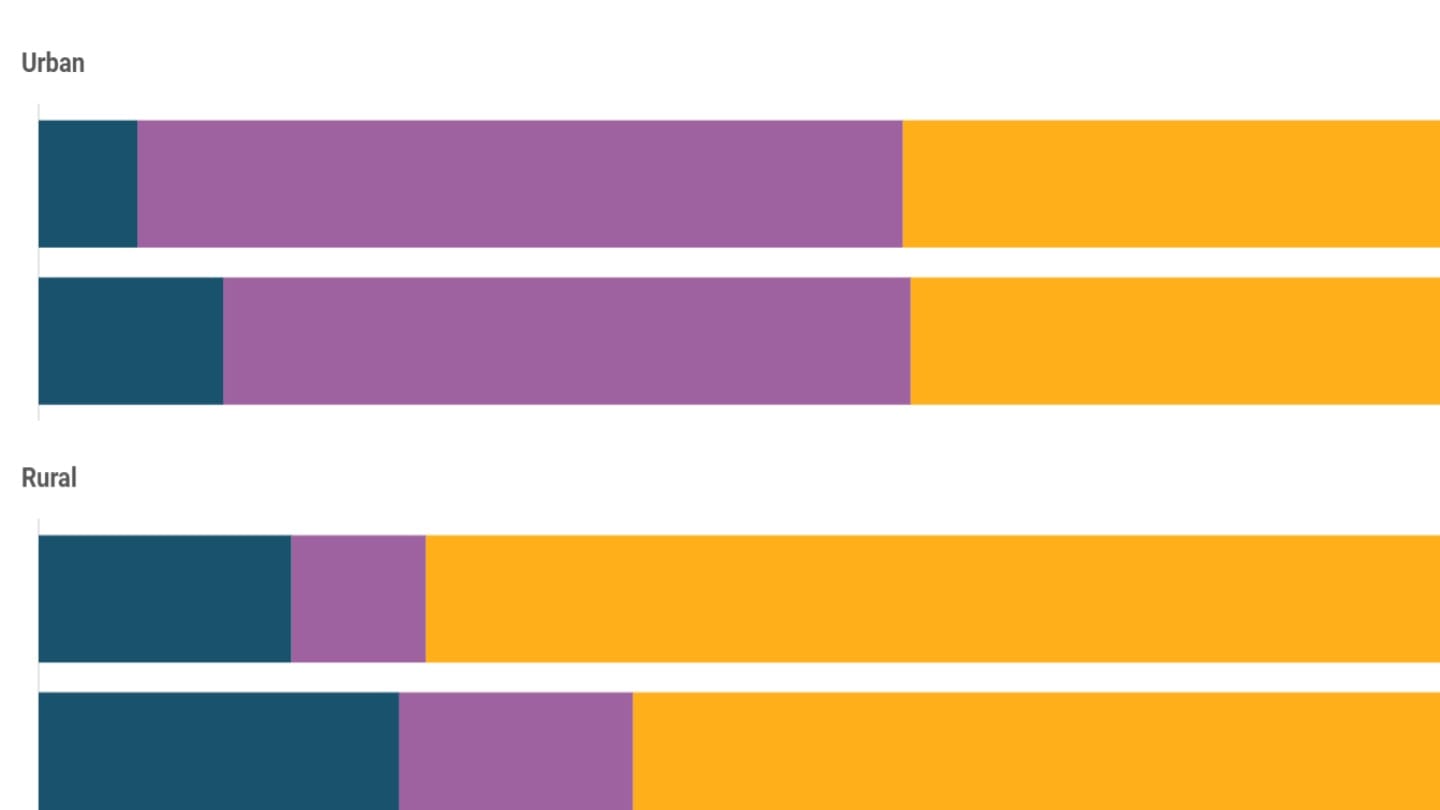ICT skills
Most Indians can send messages, but far fewer have the information and communications technology (ICT) skills needed to do calculations, make presentations or write code. There are large gaps between rural and urban Indians, and between men and women.
Access to mobile phones and the internet in India - two key components of information and communications technology (ICT) - have expanded rapidly in the last decade. But being able to effectively use these technologies to communicate, learn and work needs technical skills.
India is a signatory to the United Nations Sustainable Development Goals, one of which is to substantially increase the proportion of young people and adults with ICT skills by 2030.[1] The Indian National Sample Survey Office's Comprehensive Annual Modular Survey (CAMS) (2022-23), a nationally representative household survey of over a million people, collected data on the prevalence of nine ICT skills listed in the SDGs.[2]
ICT skills
The most common ICT skills among Indians is sending messages, including via whatsapp, which more than half of adults can do.[3] In comparison, just half as many, or a quarter of adults, can send emails.
Nearly half of adults can also use copy and paste tools to move data or documents including files and folders on a computer. One fifth can install and configure software (including apps) and hardware such as printers and flash drives, and can transfer files between computers and other devices.
At the other end of the spectrum, just one in ten Indians can use spreadsheets and create presentations. Fewer yet - only 1% of Indians - report that they can code (able to write programs or code in specialised languages).
The nature of the ICT skills Indians are more comfortable with may in part be as a result of the widespread adoption of mobile phones, but the slow uptake of the use of computers - more than eight in ten Indian adults can now use mobile phones, but only two in ten can use computers.
Who in India has better ICT skills?
Indians in their twenties are more likely to have ICT skills than any other age group. They are followed by teenagers, who have the second highest levels of these skills.
ICT skills among young Indians are comparable or close up with most emerging countries such as Russia, Brazil and Bangladesh, but lower than in advanced economies such as Canada and Japan.[4]
Older Indians, on the other hand, are less likely to have any ICT skill - less than one in ten above the age of 50 can send and receive emails, for instance.
The rural-urban gap in ICT skills is significant - the share of urban residents who can receive and send emails is twice that of rural residents. The rural-urban gap increases with the relative difficulty level of the skill.
There is also a significant gender gap, with men twice as likely as women to have most ICT skills.
Higher education greatly improves the uptake of ICT skills. Only 7% of Indian adults with a primary education can send and receive emails. At the other end, 76% of those with a higher education can use email.
Within India, the richer states with higher levels of education broadly have higher levels of ICT skills.
[1] UN-SDG target 4.4.1, under Education indicators
[2] The survey only asks respondents above 15 years of age who can use either a smartphone or a computer if they have these skills. Respondents are asked if they had these ICT skills in the three months preceding the survey. They are not required to demonstrate their ability with the skill. The sample size was 1.3 million people.
[3] Messages include emails, short texts sent over SMS or messaging service apps such as WhatsApp
[4] The International Telecommunications Union compiles data on ICT skills across more than 80 countries. We compare data for India from the NSSO survey with ITU data for the same age group (15-24). Data, however, are not available for the same year for all countries. For the purpose of this analysis, we consider any data between 2018 and 2023 as comparable.




